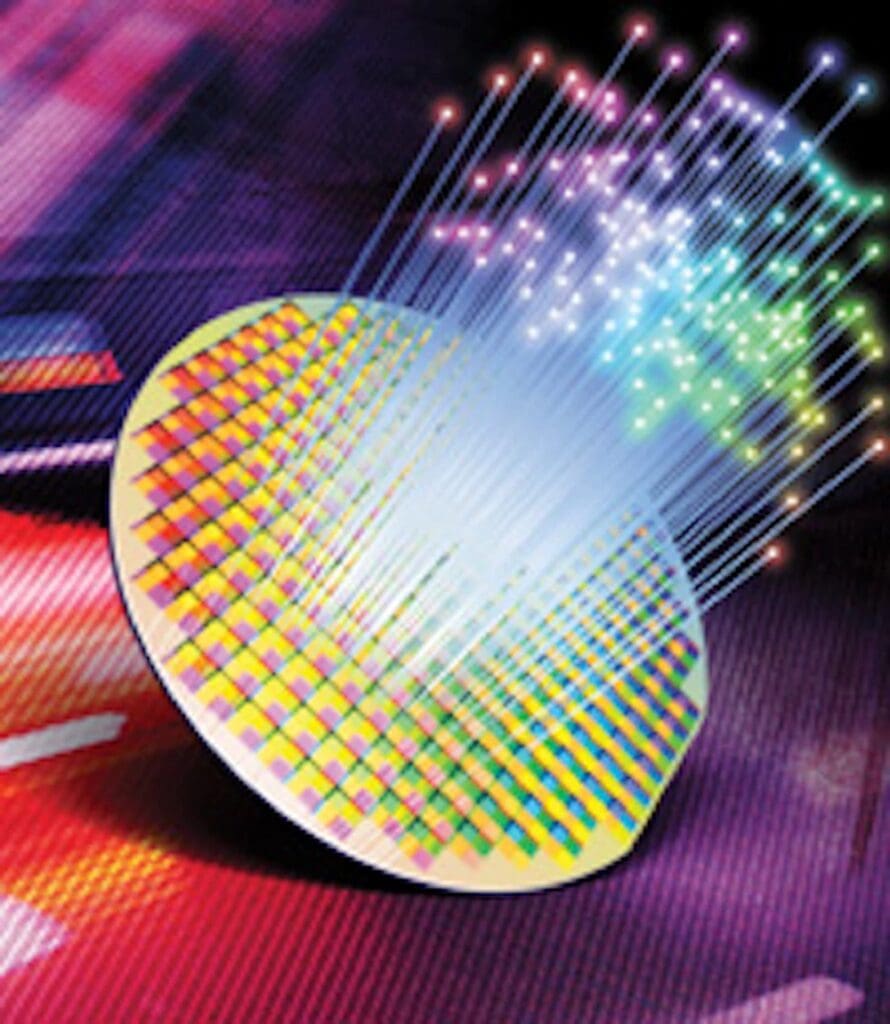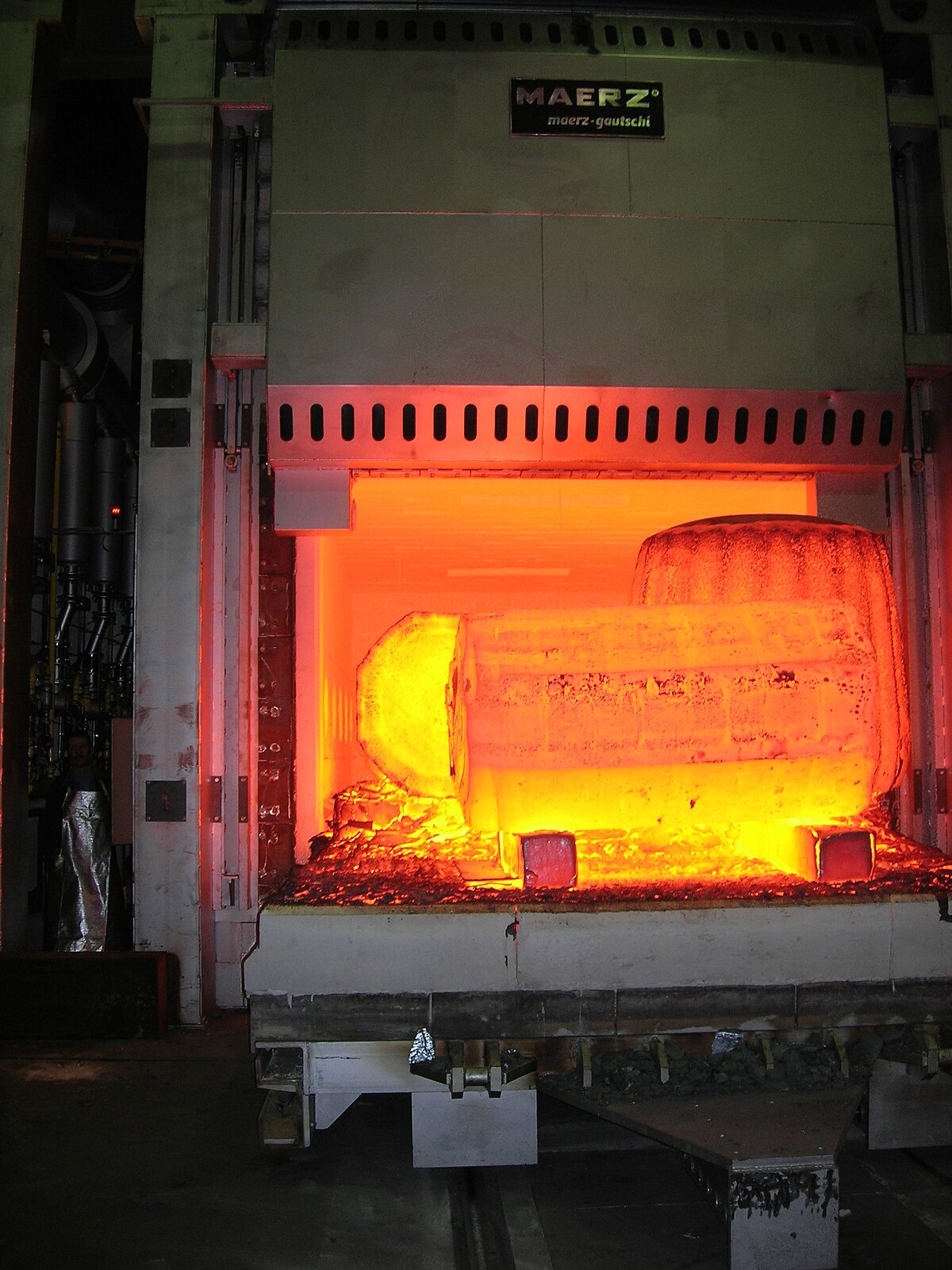Photonics, a field that may seem unfamiliar to many, is rapidly evolving and set to revolutionize how we process data.


Dr. Juan Carlos Perez, Ph.D. in Physics
A renowned physicist and a leading expert in the field of photonics. With over 15 years of experience in research and development, he has made significant contributions to the understanding and application of light in data processing. Dr. Perez holds a Ph.D. in Physics from the Massachusetts Institute of Technology and has published numerous papers in prestigious scientific journals. His work in photonics has earned him several awards and recognitions in the scientific community. Dr. Perez is passionate about making complex scientific concepts accessible to a wider audience, and he regularly writes about the latest advancements in photonics and other related fields.
Photonics, a term that may seem alien to many, is a rapidly evolving field that is set to revolutionize the way we process data. This technology, hailing from the sunny city of Valencia, Spain, is being developed by a team of dedicated scientists who are pushing the boundaries of what we know about light and its applications. This article will delve into the fascinating world of photonics, exploring its potential and how it could shape our future.
The Concept of Photonics: Harnessing Light for Efficient Data Transmission
Photonics, a term derived from the Greek word ‘photos’ meaning light, is a multidisciplinary science that focuses on the generation, manipulation, and detection of light. It is a rapidly evolving field that is set to revolutionize the way we process data. This technology, hailing from the sunny city of Valencia, Spain, is being developed by a team of dedicated scientists who are pushing the boundaries of what we know about light and its applications.
Photonics is not a new concept. In fact, it has been around for decades, with its roots tracing back to the invention of the laser in the 1960s. However, it is only in recent years that the potential of photonics has truly been recognized. This is largely due to advancements in technology and a deeper understanding of the properties of light.
At its core, photonics is about harnessing the power of light. Light, in the form of photons, is used to carry information. This is a significant departure from traditional electronic circuits that use electrons for this purpose. The use of light offers several advantages. For one, light travels faster than electrical signals, allowing for quicker data transmission. Additionally, light waves can carry more information than electrical signals due to their higher frequency.


Photonics also offers the advantage of being more energy-efficient. Traditional electronic circuits generate a lot of heat, which is essentially wasted energy. In contrast, photonics circuits generate very little heat, making them more efficient and environmentally friendly.
The potential applications of photonics are vast and varied. They range from telecommunications, where photonics can enhance the speed and efficiency of data transmission, to healthcare, where it can be used in imaging and diagnostic tools. Photonics also has potential applications in computing, with the possibility of developing ultra-fast, light-based computers.
However, the field of photonics is not without its challenges. One of the main challenges is the need for precise control over the properties of light, such as its phase, amplitude, and polarization. This requires sophisticated technology and a deep understanding of the physics of light.
Despite these challenges, the potential benefits of photonics are immense. As we continue to explore and understand this technology, we can expect to see significant advancements that will revolutionize the way we process and transmit information. The work being done by the scientists in Valencia is a testament to the potential of photonics, and we eagerly await the innovations that will emerge from their research.
In the next section, we will delve deeper into one of the key components of photonics technology – the optical fiber.
Optical Fiber: The Light-Speed Highway for Data in Photonics
Optical fiber, a term that may seem complex, is a simple yet powerful technology that forms the backbone of photonics. Optical fibers are thin strands of glass or plastic that are capable of transmitting light signals over long distances. They are the highways of the information age, carrying vast amounts of data across cities, countries, and even continents.


The use of optical fiber in photonics is a game-changer. Traditional electronic circuits use copper wires to transmit electrical signals. However, these signals can degrade over long distances, leading to loss of information. In contrast, light signals transmitted through optical fibers maintain their integrity over much longer distances, making them ideal for telecommunications and other applications that require remote connections.
But the advantages of optical fiber go beyond just distance. Light travels faster than electrical signals, which means that data can be transmitted more quickly. This is particularly important in today’s world, where the demand for high-speed data transmission is ever-increasing. From streaming high-definition videos to real-time online gaming, the speed of data transmission can make a significant difference to the user experience.
If you are interested in video games, read our blogs about them here: Blogs about video games
Moreover, light waves can carry more information than electrical signals due to their higher frequency. This means that optical fibers can handle larger amounts of data, making them more efficient than traditional copper wires. This is particularly beneficial in data centers, where large volumes of data need to be processed and transmitted.
However, the use of optical fiber in photonics is not without its challenges. One of the main challenges is the need for precise control over the properties of light, such as its phase, amplitude, and polarization. This requires sophisticated technology and a deep understanding of the physics of light.
Despite these challenges, the potential benefits of using optical fiber in photonics are immense. As we continue to explore and understand this technology, we can expect to see significant advancements that will revolutionize the way we process and transmit information.
In the next section, we will delve deeper into the manufacturing process of photonics circuits, a complex yet fascinating process that brings the concept of photonics to life.
Crafting Photonics Circuits: The Art and Science of Light-Based Data Processing
The manufacturing process of photonics circuits is a complex one, involving several intricate steps. It’s a fascinating blend of science, engineering, and art that brings the concept of photonics to life. The process begins with the deposition of a resin on a silicon wafer. This resin is then recorded using lithography systems, such as electron gun lithography. This allows for high-resolution circuit painting, albeit with slow exposure times.
Lithography, in the context of photonics, is a process used to etch intricate patterns onto a substrate, in this case, a silicon wafer. The patterns are created by exposing the substrate to a beam of light or electrons (in the case of electron gun lithography), which changes the properties of the exposed areas. This allows the unwanted material to be removed, leaving behind the desired pattern.
To overcome the slow exposure times of electron gun lithography, other techniques are used in conjunction. One such technique is the use of a mask aligner, which uses ultraviolet light to quickly illuminate the resin. However, this method has a lower resolution due to the diffraction of light. This is a trade-off that manufacturers have to consider when choosing the right technique for their specific needs.
Once the patterns have been etched onto the silicon wafer, the next step is to create the waveguides. Waveguides are structures that guide light waves from one point to another. They are a critical component of photonics circuits, allowing the light to travel in the desired direction.
The creation of waveguides involves depositing layers of different materials onto the silicon wafer. These layers have different refractive indices, which means they bend light in different ways. By carefully controlling the thickness and composition of these layers, manufacturers can create waveguides that guide light in the desired direction.
However, the manufacturing process of photonics circuits is not without its challenges. One of the main challenges is the need for precise control over the properties of light, such as its phase, amplitude, and polarization. This requires sophisticated technology and a deep understanding of the physics of light.
Despite these challenges, the potential benefits of photonics circuits are immense. As we continue to explore and understand this technology, we can expect to see significant advancements that will revolutionize the way we process and transmit information.
In the next section, we will delve deeper into the resonant ring system, a critical component in photonics circuits that plays a key role in extracting and filtering specific frequencies of light.
Resonant Ring System: Filtering Light Frequencies for Optimized Data Transmission
A critical component in photonics circuits is the resonant ring system. This system is used to extract and filter specific frequencies of light. It’s a fascinating piece of technology that showcases the power and versatility of photonics.
The resonant ring system works on the principle of optical resonance. When light of a certain frequency enters the ring, it circulates around the ring and interferes with itself, creating a resonance. This resonance amplifies the light, allowing it to be extracted and used in the circuit.
But the resonant ring system does more than just amplify light. It can also filter out unwanted frequencies. By adjusting the size and shape of the ring, manufacturers can control which frequencies resonate and which do not. This allows them to filter out unwanted frequencies and extract the desired ones.
One of the key applications of the resonant ring system is in wavelength division multiplexing (WDM), a technology used in fiber-optic communications. WDM allows multiple signals to be sent over a single optical fiber, each at a different wavelength (or color). The resonant ring system can be used to separate these signals, allowing each one to be processed individually.
However, creating components for this system using different materials presents a challenge. Different materials have different refractive indices, which means they bend light in different ways. This can affect the resonance of the ring and the performance of the system.
But with the wealth of industrial knowledge available, these challenges can be overcome. Researchers are exploring new materials and designs that can improve the performance of the resonant ring system, paving the way for more efficient photonics circuits.
In the next section, we will delve deeper into the possibility and advantages of using silicon-based photonics in the manufacturing of circuits.
Silicon-Based Photonics: Bridging the Gap Between Electronics and Light
Silicon, the second most abundant element on Earth, has long been the material of choice for the electronics industry. Its properties, such as its ability to conduct electricity and its abundance, make it an ideal material for manufacturing electronic circuits. But silicon is not just for electronics. It also has a significant role to play in the world of photonics.
Silicon-based photonics is a sub-field of photonics that uses silicon as the primary material for manufacturing photonics circuits. This is a significant departure from traditional photonics, which often uses materials like gallium arsenide and indium phosphide.
The use of silicon in the manufacturing of photonics circuits presents several advantages. For one, silicon is abundant and relatively cheap, making it a cost-effective choice. Moreover, silicon’s properties allow it to be easily manipulated, making it an ideal material for manufacturing photonics circuits.
Silicon is also compatible with existing manufacturing processes used in the electronics industry. This means that silicon-based photonics circuits can be manufactured using the same equipment and processes used to manufacture electronic circuits. This compatibility reduces the cost of manufacturing and makes silicon-based photonics a viable option for large-scale production.
However, there are challenges associated with silicon-based photonics. One of the main challenges is the control of light flows. Unlike electrons, which can be easily controlled using electric fields, light is not so easily tamed. Controlling the flow of light requires precise manipulation of the properties of light, such as its phase, amplitude, and polarization.
Another challenge is the modulation of light in real time. Modulation is the process of changing the properties of a wave (in this case, a light wave) to carry information. While modulation is relatively straightforward in electronics, it is more complex in photonics due to the high speeds at which light travels.
Despite these challenges, the potential benefits of silicon-based photonics are immense. As we continue to explore and understand this technology, we can expect to see significant advancements that will revolutionize the way we process and transmit information.
In the next section, we will delve deeper into the concept of controlling the speed of light by heating a waveguide, a fascinating aspect of photonics that showcases the power and versatility of this technology.
Controlling the Speed of Light: Mastering Light Propagation for Efficient Data Processing
One of the most fascinating aspects of photonics is the ability to control the speed of light. This may seem like something out of a science fiction novel, but it’s a reality in the world of photonics. By manipulating the properties of light, scientists can control how quickly it travels, opening up a world of possibilities for data processing and transmission.
This is achieved by heating a waveguide, a structure that guides light waves from one point to another. When light passes through a material, it slows down due to the atoms in the material absorbing and reflecting the light. This is known as the refractive index of the material. By heating the waveguide, the atoms vibrate faster, causing the light to advance slower.
This ability to control the speed of light has significant implications for data processing and transmission. By slowing down the light, data can be processed at a more manageable speed, allowing for more accurate and efficient processing. This is particularly important in applications that require high-speed data processing, such as telecommunications and computing.
However, the method of heating the waveguide to control the speed of light is not without its challenges. One of the main challenges is the need for precise control over the heating process. Too much heat can damage the waveguide, while too little heat may not slow down the light enough. This requires sophisticated technology and a deep understanding of the physics of light.


Moreover, this method is currently too slow for practical applications. The process of heating the waveguide and slowing down the light takes time, which can limit the speed of data processing. However, researchers are exploring other materials and methods to achieve high-speed operations. For instance, materials with a higher refractive index can slow down light more effectively, potentially leading to faster data processing speeds.
Despite these challenges, the potential benefits of controlling the speed of light are immense. As we continue to explore and understand this technology, we can expect to see significant advancements that will revolutionize the way we process and transmit information.
In the next section, we will delve deeper into the integration of photonics in electronics, a promising area of research that could lead to significant advancements in technology.
Integration of Photonics in Electronics: A New Era of Light-Driven Data Technology
The integration of photonics in electronics, often referred to as optoelectronics, is a promising area of research that could lead to significant advancements in technology. Optoelectronics is the study and application of electronic devices that interact with light. In other words, it’s a field that bridges the gap between electronics and photonics.
The integration of photonics in electronics has the potential to revolutionize the way we process and transmit information. Traditional electronic circuits use electrical signals to process and transmit information. However, these signals can degrade over long distances and are limited in their speed and capacity. In contrast, photonics circuits use light to process and transmit information. Light signals can travel faster and carry more information than electrical signals, making photonics a more efficient and powerful technology.
However, integrating photonics into electronics is not a straightforward task. One of the main challenges is the difference in scale between electronics and photonics. Electronic devices are typically much smaller than photonics devices, which can make integration difficult. Moreover, electronic and photonics devices operate on different principles and require different manufacturing processes.
But Spain has showed that they have great minds working on innovation, as you can see in the following blogs:
Despite these challenges, researchers are making significant strides in integrating photonics into electronics. One approach is to develop hybrid devices that combine electronic and photonics components. These hybrid devices can leverage the advantages of both technologies, offering faster speeds and higher capacities than traditional electronic devices.
Another approach is to develop new materials and manufacturing processes that can accommodate both electronic and photonics components. This could pave the way for fully integrated optoelectronic devices that offer the best of both worlds.
In the next section, we will delve deeper into the future of photonics, exploring the potential advancements and applications that could transform our world.
The Future of Photonics: Envisioning a World of Light-Speed Data Processing
As we look to the future, it’s clear that photonics will play a pivotal role in shaping our world. From telecommunications to healthcare, the potential applications of photonics are vast and varied. But what does the future hold for this exciting field?
One area where photonics is set to make a significant impact is in data processing and transmission. As our world becomes increasingly digital, the demand for high-speed, high-capacity data processing and transmission is growing. Photonics, with its ability to use light to carry information, is well-positioned to meet this demand. We can expect to see photonics technology being integrated into everything from data centers to home internet connections, providing faster, more efficient data processing and transmission.
Photonics also has the potential to revolutionize healthcare. For example, photonics technology can be used to develop advanced imaging and diagnostic tools, providing doctors with more accurate and detailed information about a patient’s health. This could lead to earlier detection of diseases and more effective treatments.


In the field of computing, photonics could pave the way for the development of light-based computers. These computers, known as optical computers, would use light instead of electricity to process information. This could result in computers that are significantly faster and more energy-efficient than current models.
However, the future of photonics is not without its challenges. One of the main challenges is the need for further research and development to overcome the technical hurdles associated with photonics technology. This includes developing new materials and manufacturing processes, as well as finding ways to integrate photonics into existing technologies.
Despite these challenges, the potential benefits of photonics are immense. As we continue to explore and understand this technology, we can expect to see significant advancements that will revolutionize the way we process and transmit information.
So it is clear that the future of photonics is bright. With continued research and development, we can look forward to a world where information is processed and transmitted at the speed of light, leading to advancements in everything from telecommunications to healthcare.




